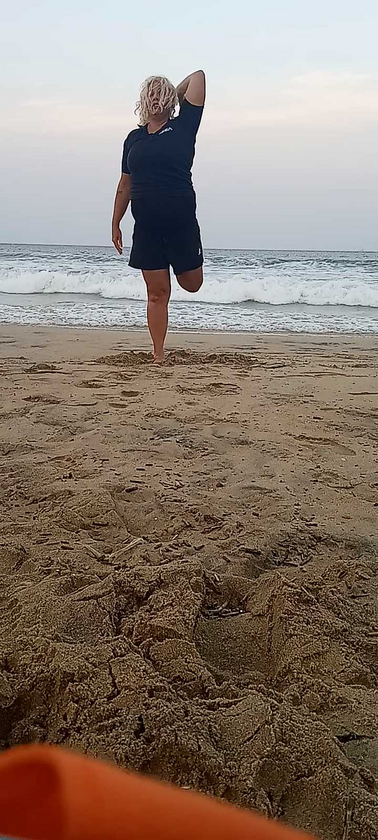
Coordination skills make you better all day, everyday!
Written by: Audrey A. Bolin, member of International Sports Science Association, certified Strength and Conditioning Specialist and certified Performance Enhancement Specialist

We like to groove seemlessly in our daily grind. How many times have you caught yourself relying on the same repetitious positions and movements to do things such as work, stand, pick up something you dropped, place items away, etc.? Break this shell to dust by increasing your mobility! Your nerves can benefit from exercise thus you benefit from better nerve function. Let's focus on a few factors about what wires your movements. (And yes, close up images of your nerves look like wires connected into muscle!) From your signals, to your movements, and organization of your nervous system, basics of coordination can go from improving your movements to accelerating your daily life!
Before we get into this, did you know once your brain signals movement that nerves rely on calcium to exact muscle contractions? After all, your muscles move your skeleton! About these signals, some of your nerves send messages from your brain, some nerves send messages to your brain, and some nerves send and receive messages both from your brain and to your brain. Your central nervous system flows from your brain down to the end of your spine and cerebral spinal fluid is coursing through your back bone to your brain to keep your nerves clean of clutter. A good Rapid Eye Movement state of sleep causes your brain to open spaces and flush that CSF to clean up nerves as well, which can make your movements less hazy due to lack of sleep. Another movement booster is plyometrics which is more like the finishine to the marathon of this article and right now we are working on the sac race, meaning, start small: signals to your muscles for your movements can improve with neuromuscular conditioning which increases your mobility, allowing coordinated movements to guide yourself more animatedly, freeing up stress and headspace. Let's say you drop something and you need to step over a little, bend down some, pick which arm to reach the object with or maybe just pick it up? Increasing your speed and choices of movement has its own definition for each person yet it all functions the same way. Wouldn't you enjoy your quality of life better when you don't have to think as much into how you're actions will follow through? Signals.
Now let's hop over to the organization of the nervous system. Each nerve that signals outside of your cranium flows in organized groups out of your vertebrae in the C1, T2, L5, etc. categories that signal your voluntary and involuntary movements, the further down your Central Nervous System, the further down your organs and limbs in your Peripheral Nervous System connects. Spinal mobility stretches and exercises can maintain your nervous system to increase optimal signals and function, provided your individual circumstances. Neuromuscular organization. When you think about Right half of you and Left half of you, there is also Top half, Bottom half, Front Half, and Back half. Practicing exercises that require you to repeat movements into different planes (Frontal, Saggital, etc ) while using bodyweight or lighter weight resistance from dumbbells, power blocks, resistance bands, and so forth, will increase your coordination ability in as little as 24 hours, and the improvement can last up to three weeks. By performing neuromuscular exercises within every two to three weeks, you increase a natural adaptation to improved coordination for longer. While we tap on the topic of neuromuscular organization, it's important to note that increasing your range of motion will increase your ability to perform coordination exercises. Dynamic stretches are safer before cardio and increase to range of movement will last 24 hrs. Once a day will increase natural adaptation for it to stay with you longer.
Train movements as the goal to your exercises! Your body contains safety mechanisms and your joints harbor near one of them. In the event that you exert too much force you have Golgi Tendon Organs like censors that will stop your muscle contractions in efforts to avoid continuous force. This can make you fall or drop something, among other results. When you perform plyometrics exercises, you increase the threshold hold for your Golgi Tendon Organs near your conditioned muscle groups. Whether you just want to keep up with your kids or play sports, or keep yourself more uppity for whatever comes your way, you can practice smaller, easier plyometrics or increase them to excel to your best! 72 hours of recovery is needed, and the results will last three weeks. So now you can imagine, with some basic coordination, stretching, and increased speed, how much better you can get through your day and how many more days you can feel better! Check out my website site for inspiration on how to initialize your amount of exercises to maximize your improvement!
Have a great day!
http://www.offseason.issacertifiedtrainer.com














